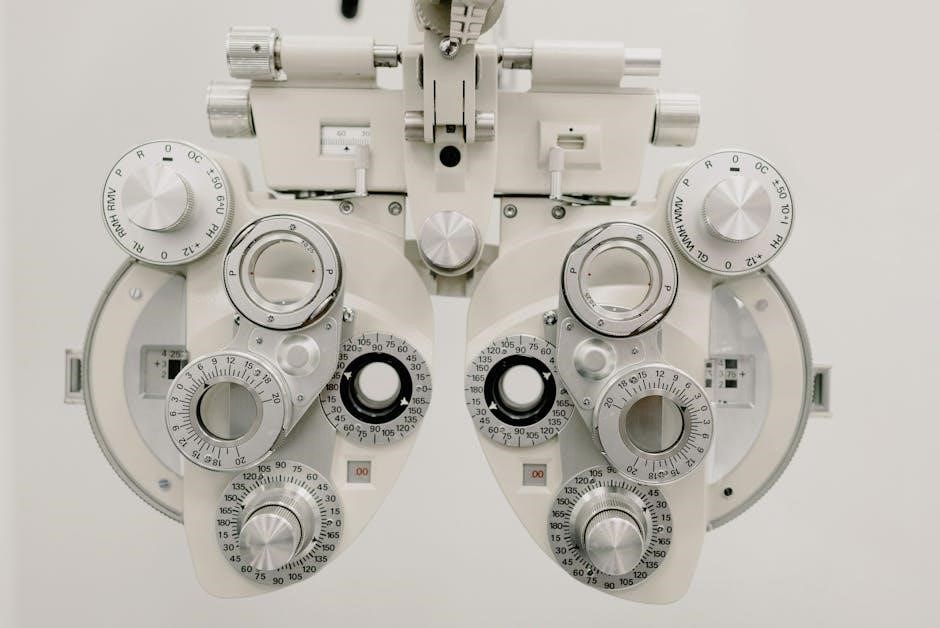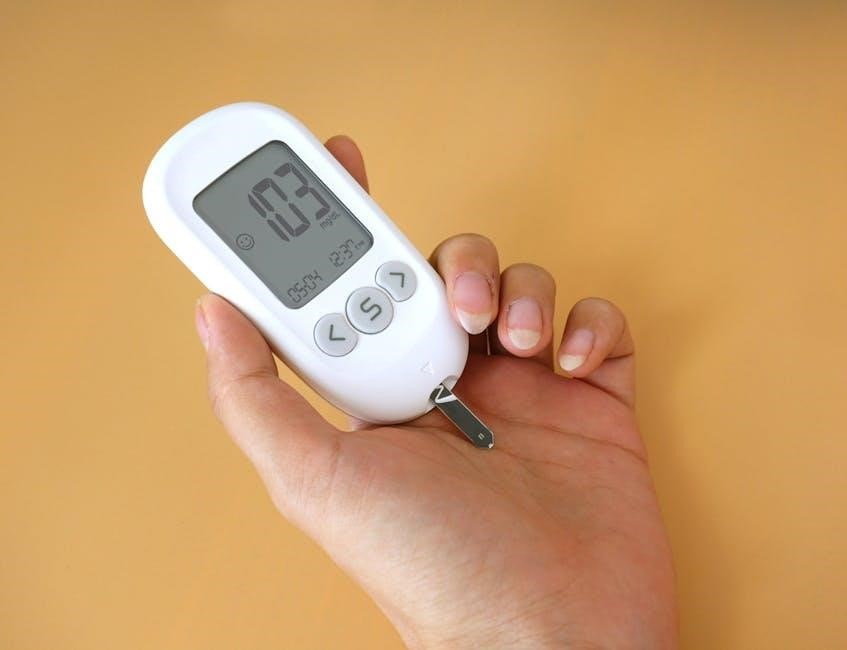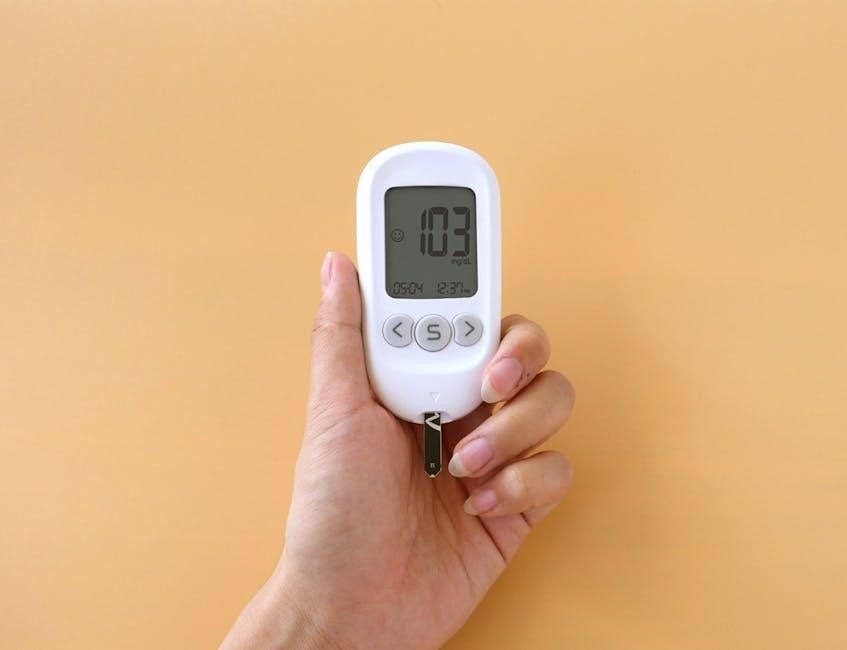The Childhood Asthma Control Test (C-ACT) is a validated tool designed for children aged 4 to 11 years to assess asthma control. It involves both child and parent responses‚ providing a score to evaluate treatment effectiveness and guide adjustments. This simple‚ reliable test helps healthcare providers determine if asthma symptoms are well-managed‚ ensuring personalized care plans.
1.1 What is C-ACT?
The Childhood Asthma Control Test (C-ACT) is a validated tool designed for children aged 4 to 11 years to assess asthma control. It consists of seven questions: four answered by the child and three by the parent/guardian. The test evaluates asthma symptoms‚ such as coughing‚ shortness of breath‚ and nighttime awakenings‚ over the past four weeks. Scores range from 0 to 27‚ with lower scores indicating poorer control.
1.2 Importance of C-ACT
The Childhood Asthma Control Test (C-ACT) is crucial for assessing asthma management in children aged 4-11. It helps determine if treatment plans are effective and if adjustments are needed. The test provides a clear score guiding healthcare decisions‚ ensuring personalized care and improved asthma outcomes. Regular use can lead to better symptom control and reduced exacerbations‚ enhancing overall quality of life for children with asthma.

Purpose and Importance of the C-ACT
The C-ACT assesses asthma control in children aged 4-11‚ guiding treatment decisions. Its importance lies in improving management‚ reducing symptoms‚ and enhancing overall asthma care effectively.
2.1 Why Assess Asthma Control?
Assessing asthma control is crucial for identifying how well symptoms are managed and whether the treatment plan is effective. Regular evaluation helps prevent exacerbations‚ improves quality of life‚ and ensures timely adjustments to therapy. The C-ACT provides insights into a child’s asthma status‚ aiding healthcare providers in making informed decisions to optimize care and outcomes for children aged 4-11.
2.2 Role in Treatment Plans
The C-ACT plays a pivotal role in shaping treatment plans by providing actionable insights into asthma control. Its score helps determine if current treatments are effective or if adjustments are needed. This tool facilitates personalized care by guiding healthcare providers in tailoring therapies to meet individual needs‚ ensuring better symptom management and improved outcomes for children with asthma.

How to Take the C-ACT
The C-ACT is completed in four steps. First‚ children aged 4-11 answer four questions independently‚ with optional parental assistance. Parents then answer three questions about their child’s symptoms. The test is scored and reviewed to assess asthma control and guide treatment adjustments‚ ensuring effective management and necessary plan modifications.
3.1 Step 1: Child’s Responses
The first step involves the child answering four questions independently. Children aged 4-11 respond to questions about their asthma symptoms‚ such as coughing‚ shortness of breath‚ and activity limitations. Parents or guardians may assist with reading or understanding but should not influence the child’s answers. This step ensures the child’s own perceptions are captured accurately.
The questions focus on the child’s experiences‚ including how asthma affects daily activities and sleep. This step is crucial for assessing the child’s awareness of their condition and its impact on their life‚ providing valuable insights for healthcare providers to evaluate asthma control effectively.
3.2 Step 2: Parent/Guardian’s Responses
After the child completes their portion‚ the parent or guardian answers the remaining three questions. These focus on the child’s asthma symptoms‚ such as coughing‚ wheezing‚ and activity limitations‚ over the past four weeks. Parents provide insights into the child’s behavior and well-being‚ offering a caregiver’s perspective. This step ensures a comprehensive assessment of the child’s asthma control‚ combining both child and parent observations for accurate results.
3.3 Step 3: Completing the Test
After the child and parent/guardian have answered their respective questions‚ the test is complete. Ensure all responses are clear and accurately recorded. No additional questions are required. The final step involves summing the scores from both sections to determine the overall asthma control score‚ which will guide further treatment decisions and management strategies.
3.4 Step 4: Reviewing Results
The final step involves reviewing the test results. The score‚ ranging from 0 to 27‚ indicates asthma control levels. A score of 19 or below suggests poor control‚ while 20-27 indicates better management. Discussing these results with a healthcare provider is essential to adjust treatment plans and improve asthma outcomes for the child.

Structure and Content of the Test
The C-ACT consists of seven questions: four for the child and three for the parent. It assesses asthma symptoms‚ impact‚ and control over the past four weeks‚ providing a comprehensive overview of asthma management.
4.1 Questions for the Child
The C-ACT includes four age-appropriate questions for children‚ focusing on asthma symptoms like coughing‚ nighttime waking‚ activity limitations‚ and rescue medication use. These questions are simple and clear‚ designed to be understood by children aged 4 to 11. The child’s responses provide direct insights into their personal experiences with asthma‚ helping to assess their level of symptom control effectively.
4.2 Questions for the Parent/Guardian
The parent or guardian completes three questions focusing on the child’s asthma symptoms over the past four weeks. These include questions about missed school days‚ activity limitations‚ nighttime waking due to asthma‚ and the use of rescue medications. These questions provide valuable insights into the child’s asthma impact and control from the caregiver’s perspective‚ aiding in a comprehensive assessment of asthma management.
Scoring and Interpretation
The C-ACT scoring system ranges from 0 to 27‚ with higher scores indicating better asthma control. Scores of 19 or below suggest poor control‚ guiding treatment adjustments.
5.1 Scoring System
The Childhood Asthma Control Test (C-ACT) uses a scoring system based on responses to seven questions‚ four from the child and three from the parent. Each question is rated on a scale of 1 to 5‚ with higher values indicating better control. The total score ranges from 0 to 27‚ where scores of 19 or below suggest poor asthma control. This scoring helps guide clinical decisions and treatment adjustments‚ ensuring effective asthma management strategies.
5.2 Score Ranges and Meanings
The C-ACT score ranges from 0 to 27‚ with higher scores indicating better asthma control. A score of 19 or below suggests poor control‚ while 20-23 indicates moderate control‚ and 24-27 reflects good control. This scoring system helps healthcare providers assess treatment effectiveness and make informed decisions to optimize asthma management for children aged 4-11 years‚ ensuring improved symptom regulation and quality of life.

Benefits
The C-ACT provides clear assessment of asthma control for children aged 4-11‚ aiding in treatment adjustment and involving both child and parent responses‚ ensuring comprehensive care.
6.1 For Parents
The C-ACT empowers parents by providing insights into their child’s asthma control‚ helping identify if symptoms are well-managed or if treatment adjustments are needed. It involves parents in their child’s care through specific questions‚ ensuring a collaborative approach to asthma management. The test offers a clear score‚ enabling parents to discuss their child’s progress with healthcare providers and make informed decisions for better asthma care.
6.2 For Healthcare Providers
The C-ACT provides healthcare providers with a standardized tool to assess asthma control in children aged 4-11‚ aiding in personalized treatment decisions. The test’s clear scoring system helps identify poorly controlled asthma‚ enabling timely adjustments to treatment plans. It also facilitates effective communication with parents‚ ensuring a collaborative approach to managing asthma and improving patient outcomes through data-driven care.

Clinical Implementation
The C-ACT is easily integrated into clinical practice‚ enabling healthcare providers to monitor asthma control in children aged 4-11. Regular administration helps track symptoms and treatment effectiveness‚ guiding adjustments to care plans and improving patient outcomes through consistent‚ data-driven assessments.
7.1 Integration into Practice
The C-ACT is seamlessly integrated into clinical workflows‚ serving as a practical tool for assessing asthma control in children aged 4-11. Healthcare providers administer the test during routine visits‚ ensuring consistent monitoring of symptoms and treatment effectiveness. The test’s structured format‚ involving both child and parent responses‚ facilitates collaboration between patients and providers‚ enabling personalized care plans and improving asthma management outcomes.
7.2 Frequency of Testing
The C-ACT is typically administered every 2-4 weeks for children with poorly controlled asthma and every 3-6 months for those with well-controlled symptoms. This frequency ensures consistent monitoring and timely adjustments to treatment plans. Testing may also be performed during asthma exacerbations or when changes in therapy are considered‚ adapting to individual needs for optimal asthma management in children aged 4-11 years.
Case Studies
Example 1: A 7-year-old with asthma showed improved control (score 22) after medication adjustments. Example 2: An 8-year-old with persistent symptoms scored 18‚ prompting further treatment changes.
8.1 Example 1
A 7-year-old with persistent asthma scored 18 on the C-ACT‚ indicating poor control. Symptoms included frequent coughing and nighttime awakenings. After adjusting medication and improving inhaler technique‚ the score improved to 22‚ showing better control. This case highlights how C-ACT can guide treatment adjustments and improve asthma management in children.
8.2 Example 2
A 9-year-old with mild asthma scored 24 on the C-ACT‚ showing good control. However‚ occasional symptoms during exercise were reported. The healthcare provider reinforced asthma education and recommended a spacer device for better medication delivery. The next C-ACT score was 27‚ confirming effective management and improved quality of life for the child.

Additional Resources
Visit the official C-ACT website or consult reputable sources like the American Academy of Pediatrics for detailed guides‚ downloadable PDFs‚ and additional materials to support asthma management in children aged 4-11.
9.1 Where to Find More Information
Visit the official C-ACT website or consult reputable sources like the American Academy of Pediatrics. Additional resources include the National Heart‚ Lung‚ and Blood Institute and asthma.org. For detailed guides‚ research papers‚ or downloadable PDFs‚ explore Google Scholar or contact healthcare providers for personalized guidance and support in managing childhood asthma effectively.
9.2 References
Official C-ACT publications‚ American Academy of Pediatrics guidelines‚ and studies published in respiratory journals provide comprehensive insights. The National Heart‚ Lung‚ and Blood Institute and asthma.org offer validated resources. Research articles on Google Scholar and clinical trials referenced in medical databases further support the use and interpretation of the C-ACT for childhood asthma management.

Development and Validation
The Childhood Asthma Control Test was developed to assess asthma control in children aged 4-11. It was validated through clinical studies to ensure reliability and effectiveness in monitoring asthma symptoms and treatment responses‚ providing a standardized tool for healthcare providers.
10.1 Creation of C-ACT
The Childhood Asthma Control Test (C-ACT) was created to provide a reliable assessment tool for asthma control in children aged 4 to 11. Developed by healthcare experts‚ it combines child and parent responses to evaluate symptom severity and treatment effectiveness. The test includes seven questions‚ with four focused on the child’s experiences and three on the parent’s observations‚ ensuring a comprehensive understanding of asthma management and control. Its design emphasizes clarity and ease of use‚ making it a practical tool for both families and healthcare providers to monitor asthma effectively and make informed decisions.
10.2 Validation Studies
The Childhood Asthma Control Test (C-ACT) has undergone rigorous validation studies to ensure its reliability and effectiveness. Research has demonstrated strong concordance between C-ACT scores and medical criteria for asthma control. A study in pediatric settings confirmed its ability to accurately assess asthma symptoms and treatment responses in children aged 4 to 11. These studies highlight the tool’s validity and practicality in clinical practice.
Limitations
The C-ACT is designed for children aged 4-11 and may not apply to younger or older populations. It relies on self-reported data‚ which can be subjective.
11.1 Potential Drawbacks
The C-ACT is limited to children aged 4-11‚ excluding younger or older populations. It relies on self-reported data‚ which may be subjective and less accurate. Scores range from 0 to 27‚ with lower scores indicating poorer control. The test does not measure lung function or inflammation‚ limiting its ability to assess asthma severity comprehensively. These factors should be considered when interpreting results.
11.2 When Not to Use
The C-ACT should not be used for children outside the 4-11 age range or those unable to understand the questions. It is not suitable for assessing severe asthma exacerbations or as a standalone diagnostic tool. Additionally‚ it should not replace clinical assessments like spirometry or when objective measures of lung function are required. Its use is limited to symptom-based asthma control evaluation.
Comparison with Other Tools
The C-ACT is specifically designed for children aged 4-11‚ unlike other asthma tools. It uniquely combines child and parent responses‚ offering a tailored approach for pediatric asthma assessment.
12.1 Similar Tests
Similar tools include the Asthma Control Test (ACT) for adults and teens‚ and the Asthma Control Questionnaire (ACQ). These tests assess asthma control through symptom evaluation and quality-of-life questions. While the ACT focuses on adults‚ the C-ACT uniquely targets children aged 4-11‚ incorporating both child and parent responses for a comprehensive assessment. These tools share the goal of improving asthma management but differ in age focus and methodology.
12.2 Unique Features of C-ACT
The C-ACT uniquely combines child and parent responses‚ offering a dual perspective on asthma control. Designed for children aged 4-11‚ it includes child-specific questions and parent/caregiver insights‚ ensuring a comprehensive assessment. Its simple‚ age-appropriate design and validated scoring system make it an effective tool for monitoring asthma in young children‚ providing clear guidance for treatment adjustments and improving asthma management outcomes effectively.

Tools and Materials Needed
The C-ACT requires the test questionnaire‚ available as a downloadable PDF‚ and a pen/pencil for responses. Parents and children can complete it at home‚ ensuring accurate results for healthcare discussions.
13.1 What Parents Need
Parents need the C-ACT test form‚ available as a PDF‚ to guide their child through the questionnaire. They should assist with reading questions if needed but allow the child to select responses. Parents must also complete their own section honestly. No special medical knowledge is required‚ but understanding the scoring system helps interpret results for discussions with healthcare providers.
13.2 What Providers Need
Healthcare providers need access to the C-ACT PDF‚ a reliable scoring system‚ and training to interpret results accurately; They should review completed tests‚ considering both child and parent responses. Providers must also have knowledge of asthma management guidelines to adjust treatment plans based on C-ACT scores‚ ensuring informed decisions for improved patient outcomes and effective asthma control.

Special Considerations
The C-ACT is tailored for children aged 4-11‚ requiring adjustments for younger vs. older children. Providers must consider developmental stages and ensure questions are age-appropriately understood.
14.1 For Younger Children (4-6)
For children aged 4-6‚ the C-ACT requires additional support. Parents or guardians should assist with reading and understanding questions‚ ensuring their child selects responses independently. Simplified language and visual aids may help younger children grasp the questions. This ensures accurate responses and reliable scoring‚ making the test effective for assessing asthma control in this age group.
14.2 For Older Children (7-11)
Older children (7-11 years) can typically complete the C-ACT with minimal assistance. They are able to read and understand the questions independently‚ though occasional clarification may be needed; Their increased comprehension ensures more accurate responses‚ making the test an effective tool for assessing asthma control in this age group. This independence enhances the reliability of the results.
The Childhood Asthma Control Test (C-ACT) is a valuable tool for assessing asthma control in children aged 4-11‚ helping guide treatment and improve outcomes through collaboration between parents and healthcare providers.
15.1 Summary
The Childhood Asthma Control Test (C-ACT) is a reliable‚ validated tool for assessing asthma control in children aged 4-11. It combines child and parent responses to provide a score‚ helping healthcare providers evaluate treatment effectiveness. The test is simple‚ effective‚ and promotes collaboration between families and providers to improve asthma management and outcomes for children.
15.2 Final Thoughts
The Childhood Asthma Control Test (C-ACT) is a valuable‚ validated tool for improving asthma management in children aged 4-11. By fostering collaboration between parents and healthcare providers‚ it ensures personalized care and better health outcomes. Regular use of the C-ACT can lead to enhanced symptom control and improved quality of life for children with asthma‚ making it an essential resource for effective asthma care.
